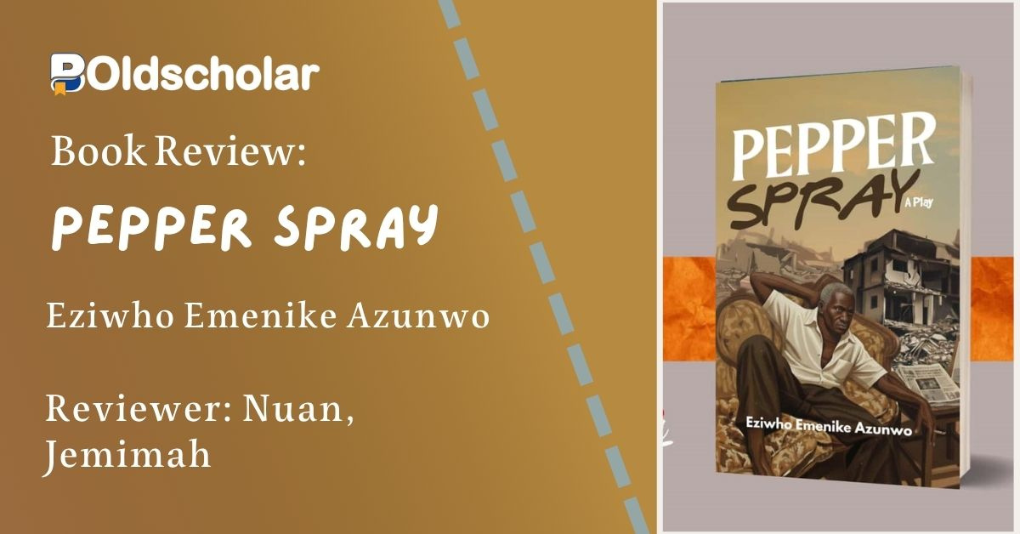Genre: Drama
Author: M.S. Dogara
Pages: 91
Year of Publication: 2023
Publisher: Pentrust Publishers Ltd, Kaduna
Reviewer: Denja Abdullahi
Migration is as old as man. In fact, migration is man. Viewed from whatever prism, secular or religious, migration is the most defining and unchanging characteristic of man as he goes about making a meaning out of life. Settlements, communities, societies, nations and countries as we know them today would have been impossible and unrecognizable without migration, whether forced or voluntary. Why is this innate tendency of man to move in search of greener pastures gradually becoming a big issue in our world today? Has the world become unsafe, intolerant and unsettled that migration has become a front-burning issue? Are hopes not being dashed and resources thinning everywhere which has made the migrant a focus of nuanced attention all over? What are the emergent impetus for migration in the world today, particularly from the Global South towards the Global North? These and many other questions are what the playwright, M.S. Dogara, attempts to answer in his play, A Midnight Migrant.
The Play in (Twelve) 12 acts and 90 pages is a dramatization of the raging migration syndrome of persons from the country to any part of the world under whatever guise that has become the fad in the Nigerian society today and popularly referred to as Japa or Jakpa. The word, as I understand it, is derived from the Yoruba language which alludes implicitly to someone breaking free and running away from a delimiting stranglehold. Having somewhere to run to or knowing where to run to is not the issue here: it is a case of break free and run first, the destination can come later! Nigerians should understand that this present wave of insistent migration is the second in the recent history of the country. The first was in the 80s, when a significant number of our highly skilled persons, and mainly intellectuals, fled the debilitating neo-liberal economic policies introduced by the military that made life difficult and killed off our productive institutions. Then it was called “brain-drain” as the focus was on the skilled and largely legal migrants. Now it is called rightly Japa and not brain –drain as the illegal immigrants are more in focus as they die crossing the Sahara Desert, enslaved in Libya or get drowned in the Mediterranean Sea, off the coast of Lampedusa.
A Midnight Migrant is a fictional dramatic enactment of this sad story of illegal and irregular migration of the main protagonist, Utaro, with the nickname,” Cool Dollars”, who left school and relentlessly plot to emigrate to America or Europe at all cost. For him, it is a waste of time to explore opportunities around him and within his own country. His quaint and uninformed idea about illegal migration, showcased in sometimes comical manner by the playwright, pitched him against his more rational father, younger brother and worldly –wise sister. Utaro only has support for his obsession about migration from his mother. He joins a club of intending illegal immigrants in his community who submit themselves to a popular migrants’ smuggler that falsely assure them of an El-Dorado in their destination country. Some of the intending immigrants are on their second or third attempts at emigrating. Utaro convinces his parents to sell their house and other effects to finance his illegal migration. He and other illegal immigrants then set off at midnight with their minder on a precarious journey to the illegal migrants’ paradise, through the desert route, where they contend with kidnappers, rebels, wild animals, highway robbers and a very harsh terrain. Of course, Utaro’s dream of migration is soon aborted in the desert with many of the co-migrants perishing, leaving him and his friend Dorroh, as the only ones who survive and trace their steps back home to tell the sordid story. Utaro and friend return home like the biblical prodigal son, barely with their lives and with indelible scars, to meet those they left at home and who they mocked before as unambitious and unadventurous, thriving. Utaro’s younger brother, Malasa, concludes studies, and legally migrates to the U.K. for further studies, comes back to get a job and buys back the old house sold to finance Utaro’s journey and even builds the parents a new abode. Utaro’s sister, Laraba gets married to a geologist. His friend, Libro, the coffin maker and seller, finds fortune and contentment in his trade, to the consternation of the returnee Utaro. At the end, the playwright, with the use of a “deux ex machina” dramatic device, made Utaro to chance on a precious stone on the fringes of his re-entry into the country, which turns out to be a diamond, thereby making his fortune better. Pa Ayama, Utaro’s father sums up the underlying message of the play at the end thus:
I told you that your country has everything you need.
Look at what has happened. Your fortunes are right
here but you’ve chosen to put your life in a deadly risk
at the wilderness. (91).
Beyond the bare framework of the story as given, it is drama, largely realized in dialogues in which the playwright employs required dramatic devices. The characters are clearly marked out to the point of their becoming stock characters, but this is necessitated by the contrastive message against illegal migration the play needs to project. Expectedly, the elderly characters in the play like the father and uncles, see the futility and dangers of illegal migrations and their language contains the appropriate idioms and expressions. The opening act of the play, which features exchanges between Utaro and his worldly-wise younger sister, are contrastively pithy and sharp as the sister warns “lean liberty is better than fat slavery.” In other acts in the drama, such as the ones containing the dialogues between Utaro and his friend, Libro the coffin maker, and the exchanges between him and his culture-suffused fiancée, Sodalina, satirical humour in speech and actions are deployed. At some points in the text, particularly in those acts depicting the experiences of the illegal migrants in the precarious desert route, the play reads more like a prose work or film script, with long descriptive passages that will be impossible to realize on stage. At those points, the messages start to overwhelm the medium, which is drama. Here, some details that can be implied in dialogues of the characters are unnecessarily couched in stage directions (which in some cases are not in italics as required in a dramatic text).
Regardless of the unevenness and seemingly contrived plot structures in some parts of the play, A Midnight Migrant primarily succeeds as a text that can actually serve the utilitarian purpose of an “agit-prop” advocacy against illegal migration. A theater or film director that knows his or her onions can take on this play as a primary resource to produce a play for stage or script for the big screen. Certainly, in the transition to the stage or screen, some parts or details will be pruned and others will be extended or heightened. This drama is certainly one that should be produced in secondary schools and higher institutions to advocate against illegal migrations. The play can also be performed in community halls of those communities infamous for having younger persons embarking on illegal migrations. The play can be further showcased to the returnee or deported illegal immigrants in their rehabilitation camps so that they can see themselves in the play; thereby assisting the playwright, or director to flesh out the realism of the story, and even re-enacting the acts and scenes themselves in the mould of theater for development.
I therefore recommend A Midnight Migrant as a fitting creative addition to the growing number of literatures across all genres addressing the multi-dimensional problems of illegal migrations called the Japa Syndrome presently bedeviling our society.
Share this post





Be the first to comment on this post